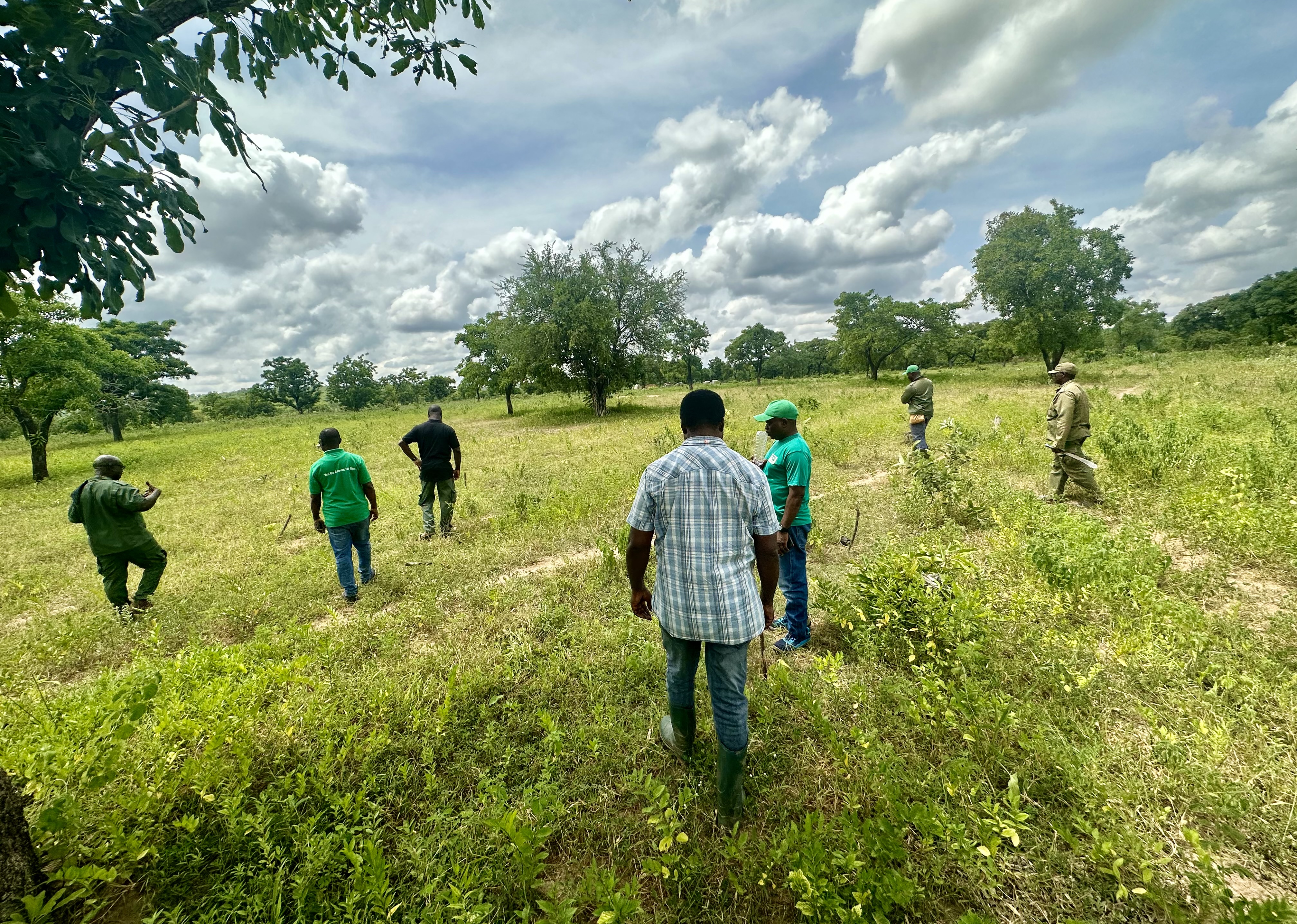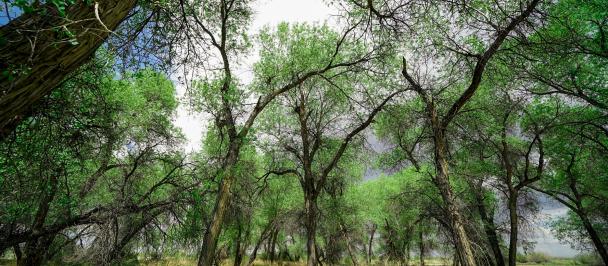By Ayirebi Frimpong, Forest Specialist, & Eugenia Ofosua, National Service Personnel
Safeguarding Ghana's Forests and the Heroes
August 28, 2024

Some forest guards and officials on a field visit.
Forests are vital resources, providing numerous benefits including raw materials, environmental services, and cultural identities that support the livelihoods of many communities and generate income for governments.
However, illegal mining and illegal logging, especially through chainsaw operations pose a significant threat to these benefits, resulting in degradation, biodiversity loss, nutrient depletion, deforestation, and climate change-inducing emissions.
In Ghana, illegality in forest reserves has been a significant issue since the 1980s. Although Act 547, LI 1649, and Act 703 condemn illegal logging, chainsaw operations, and illegal mining operations respectively, the Government of Ghana continues to struggle with the persistence of chainsaw logging and illegal mining activities in the country.
It is estimated that about 70% or (2.3 to 2.7 million m3 area) of Ghana’s total wood used both locally and internationally is illegally harvested every year. Chainsaw operations contribute to two-thirds of domestic wood use, while one-third is exported. On the other hand, about 85% of an estimated number of one million individuals in Ghana are either directly or indirectly employed in the illegal mining sector. Most of these illegal operations occur in forest reserves, thereby destroying and threatening the country’s forest cover and biodiversity.
As part of strategies to combat forest illegalities, the Government of Ghana has employed forest guards or rangers. These guards play a crucial role in protecting forests through monitoring, enforcing regulations, and engaging with local communities to protect forest cover. The physical presence of forest guards in these forests, deter illegal activities to some degree, enables rapid transmission of information, and ensures sustainable forest management. The role of forest guards, however, has not been without challenges over the years.
Attacks on forest guards
Forest guards are primarily responsible for setting up forest boundaries through weed clearing and boundary markings, enforcing regulations, fire management, forest protection, community outreach, surveillance, and monitoring. Although section four of the National Redemption Council Decree 243 (NRCD 243), grants forest guards the authority to take necessary actions to prevent forest-related offences, they have limited resources and in some cases training to effectively exercise their legal powers.
Forest guards, at the frontier of the battle against illegal forest operations, frequently face physical violence, intimidation, and in certain cases, death from illegal operators who seek to avoid capture, and to carry on with their destructive activities.
In recent years, several attacks on forest guards have been reported in the media. In separate instances, forest guards in a bid to protect the country’s forest reserves, suffered life-threatening gunshot attacks from illegal operators. Critical attention is required in addressing shortfalls faced by the forest guards as frontline defenders of Ghana’s forest resources.
Ensuring right tools and training for forest guards
The Government of Ghana has put in commendable measures to address illegality in the forestry sector. For instance, a tracking system to monitor and control timber trade, which aims to prevent illegal logging and ensure sustainable forest management is in implementation.
The Ghana Wood Tracking System (GWTS) captures data such as tree stock records, harvest records, and transport from both natural and plantation forests which aids in managing and administering Ghana’s timber resources. Although these measures ensure an effective tracking system, there are still issues of limited resources and in some instances, a total lack of monitoring capacity to halt the operations of illegal miners and loggers in the forest. This causes unauthorized operators some latitude in their trade, and further placing forest officers in risky and uncertain positions.
Protective gear like bulletproof vests, helmets, and communication devices should be provided to forest officials for enhanced protection. Additionally, leveraging innovation, technology and digital tracking systems including drones should be explored to monitor and alert professionals on potential dangers.
Collaborative resource management is a powerful tool for safeguarding the forests, biodiversity resources, and the communities that depend on them. By uniting government agencies, local communities, and other key stakeholders through shared decision-making, policy development, resource allocation, capacity building, partnership formation, advocacy, and conservation investment, these resources will be sustained.
Although halting illegal operations in forests and eliminating the abuse of forest guards is crucial for the protection of the environment and human rights, there should be continued efforts to address underlying causes of illegal chainsaw and mining operations that lead to deforestation and forest degradation, such as poverty, lack of alternative livelihoods, and weak governance.
These efforts should include the provision of livelihood training, finance, and entrepreneurship support to forest-dependent communities. Having effective collaboration between policymakers, civil society, local communities, academia, traditional authorities, and private sector actors would address these interconnected issues and ensure a sustainable future for all.
Collaboration among policymakers, civil society, local communities, academia, traditional authorities, and private sector actors is crucial to addressing forest degradation and securing a sustainable future for all.

 Locations
Locations



